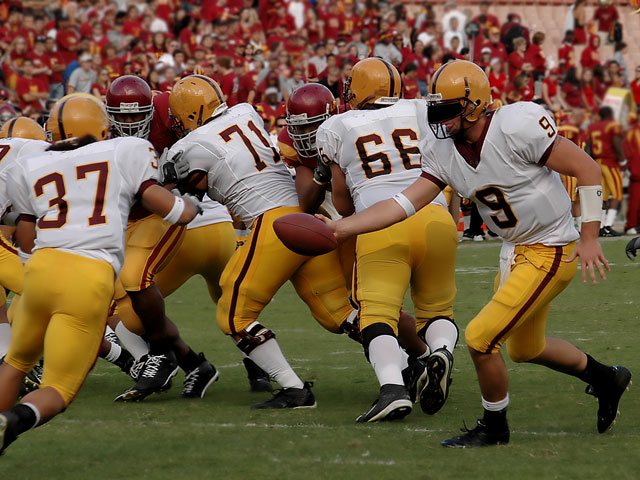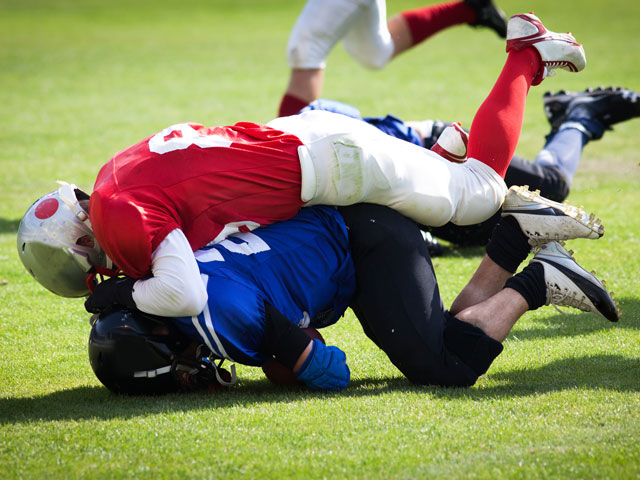What is the Oklahoma Drill in Football?
The purpose of the Oklahoma Drill is to simulate the real, on-field conditions of a Football Game with a small amount of players at practice.
| Read: 4 min

When practicing to play one of the most physically demanding sports, it is essential to ensure that players will be prepared to take hits and deal them out, all while keeping a consistent intensity.
While coaching styles, the landscape of the NFL, and the way people play football, in general, have changed drastically in recent decades, this drill has left its mark on the game and remains a widely discussed part of football culture to this point day.
Many can argue that the Oklahoma drill captures the essence of football on a smaller scale. It comes down to offense versus defense and puts a smaller group of players with opposing goals against each other.
It is also likely that this was the philosophy of the man who created the drill, a former player and dedicated to the game for most of his life.
With all this said, it is not a perfect drill, and it has recently faced scrutiny over its practicality. As a result, coaches no longer want to run the drill due to the risk it poses to the participants.

How To Perform the Oklahoma Drill
The Oklahoma drill is typically performed with three or fewer players on offense and three or fewer on defense. The two sides simulate an in-game scenario, where the ball carrier stands behind a blocker.
The blocker’s job is to protect the ball carrier, while the defensive players attempt to break past this layer of protection and tackle the carrier or push them out of bounds. It is similar to a standard run play in a football game, and the drill can be modified to better equip the players for a game-time scenario.
The point of the drill is to help the players prepare to get hit during the game. Also, it can help with form and speed if they are subpar. A running back can also benefit from this drill just as much as a tackle.
The drill also provides an excellent way to see how players who look good in non-contact drills will fare in more realistic scenarios. Sometimes the only way to see a player's true skill is to see them in action on the field.
Typically, the drill is used at the start of the season, at the first practice, where players are fully padded up. It is used as an introduction to full contact for the year, and as previously stated, many coaches use it as a test for how the players performing well in contactless drills will do in a game-time scenario.
Where Did It Originate?
The Oklahoma Drill, as you might have guessed, comes from former Oklahoma Sooners head coach Bud Wilkinson. He came up with the drill back in the 1940s when he wanted a way to test players in a full-contact scenario without an actual game taking place.
Wilkinson’s drill has since been used in football practices and training camps across the country at every level. So there’s a good chance you ran this drill in high school or your kids do when they play.
Running the drill also created a spectacle, and it picked up popularity since players and coaches alike could gather around where the drill was being run to see their teammate's skills and aggression on full display.
Before his career as a coach, Wilkinson played as a guard at the University of Minnesota. After that, he played on the college all-star team in 1937. He began coaching for the Sooners in 1947 and eventually led the team to three national championships and 14 big eight appearances during his tenure.
Wilkinson would also go on to win AFCA Coach of the Year in 1949 and the Amos Alonzo Stagg Award in 1984.

Controversy
In recent years, running the Oklahoma drill at the professional level has been banned. NFL coaches and the organization decided in 2019 that banning the drill from practices would help minimize injuries, specifically concussions, and keep players safe. This decision inevitably faced backlash, and many claimed that the NFL was going soft.
This was exacerbated by the fact that the NCAA still allowed the drill, although it is not used as often as it used to be. As a result, there is no guaranteed safe way to get hit, and coaches on every level have concluded that it is wiser to avoid the added risk of performing the drill in practice altogether.
The critics of this drill also claim that it is indicative of a changing culture and old-school football players used to be tougher. With this said, the studies and research conducted on how contact sports can damage the body and mind, specifically the studies conducted on CTE, make it seem like the drill puts the players who perform it at a higher risk of injury.
This is something that many coaches have taken into consideration, and the majority feel like it is better not to risk head injuries in practice, especially since there are safer drills they can use as alternatives.
Video Examples of the Oklahoma Drill
Alternative Names to the Oklahoma Drill
Interestingly enough, some schools give it a name that's more in line with their Mascot. For instance, LSU calls it the Big Cat Drill.
Or, as in the case with Navy, they call it The Ring Drill.
Conclusion
The Oklahoma drill still remains a staple of football practice at every level, despite the controversy it has had to face in recent years. Many coaches across the country still swear by the drill, and some players can appreciate the drill’s ability to simulate the feeling of a real game.
It acts as a miniature scrimmage, and Bud Wilkinson worked hard to perfect the drill so that his team could improve in both skills and mentality. The Wilkinson Sooners were a formidable team, and it is easy to argue that the Oklahoma drill played a significant role in that success.
Even though it is banned in the NFL, many youth football teams want to keep the legacy of the drill alive by running it in their practices. You may have even seen a viral video or two where a team is running Oklahoma drills and keeping the ferocity and dedication that many associate with the game of football alive.